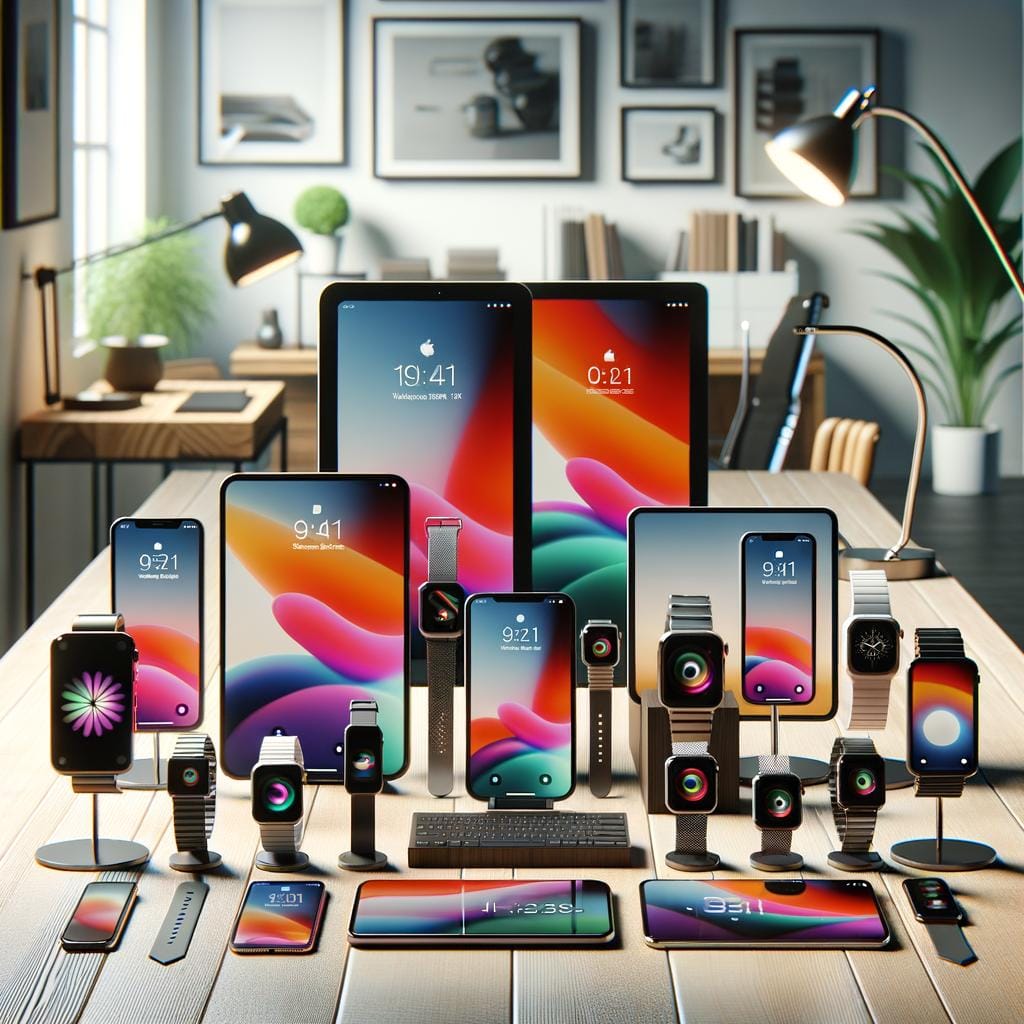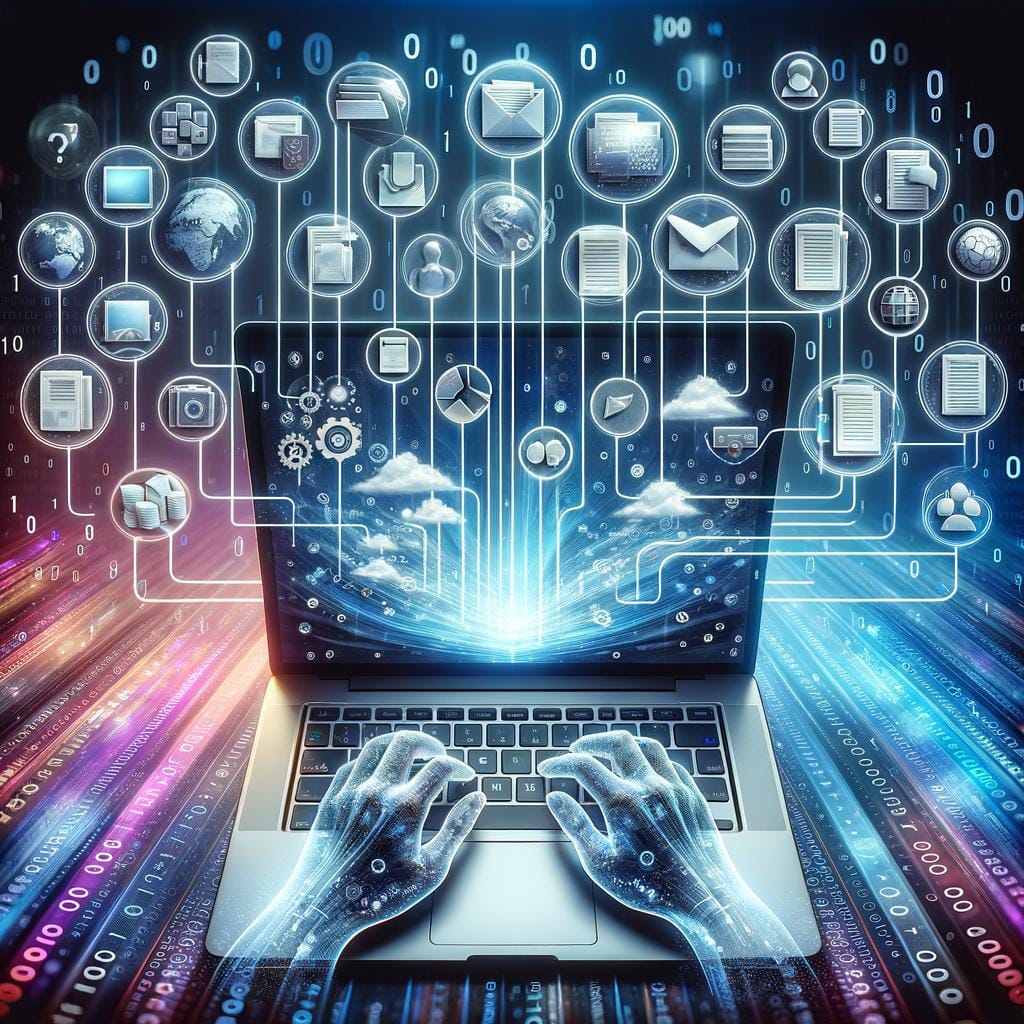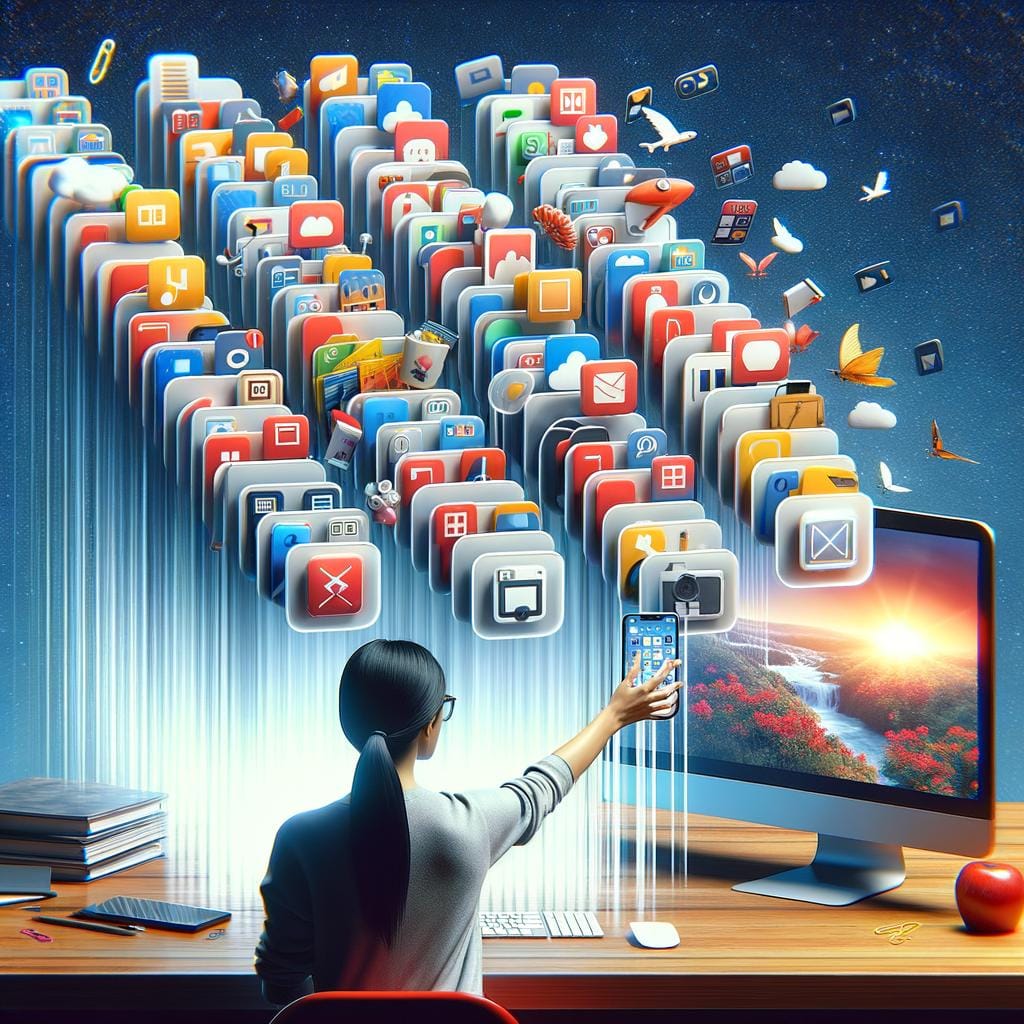In today’s digital age, where our lives are intertwined with technology, the need for organizing mobile devices has never been more critical. With smartphones and tablets becoming essential tools in both personal and professional spheres, ensuring that these devices are decluttered and well-organized can significantly enhance efficiency and productivity. From apps to photos to files, a streamlined mobile device can make navigating through the digital world seamless.
The benefits of keeping your mobile devices organized are numerous. Not only does a clutter-free interface save you time searching for information or apps, but it also improves overall device performance. By decluttering your phone or tablet, you can optimize storage space, reduce distractions, and create a more user-friendly experience. In a world filled with constant digital noise, maintaining an organized mobile device can help you stay focused and efficient in completing tasks.
To achieve a well-organized mobile device, implementing effective strategies is key. From arranging apps in folders to managing photo albums and files, there are various tips and tricks that can help streamline your digital life.
Additionally, utilizing specialized apps designed for task management or setting up systems for backing up and syncing your devices can further enhance organization. By taking proactive steps to organize your mobile device, you can harness the full potential of these powerful tools while minimizing stress and maximizing productivity.
Benefits of Keeping Your Mobile Devices Organized and Decluttered
In today’s fast-paced digital world, the importance of organizing mobile devices cannot be overstated. Keeping your smartphone or tablet organized and clutter-free can have numerous benefits, both in terms of efficiency and mental well-being. By taking the time to declutter your mobile device, you can streamline your digital life and make it easier to find what you need when you need it.
One of the key benefits of keeping your mobile devices organized is improved productivity. When your apps, photos, and files are well-organized, you spend less time searching for what you need and more time actually using your device for its intended purpose. A clutter-free device also means fewer distractions, allowing you to focus better on the task at hand without being constantly interrupted by notifications or irrelevant content.
Moreover, maintaining an organized mobile device can help reduce stress and overwhelm. Clutter has been shown to have a negative impact on mental health, and this applies to digital clutter as well. By organizing your apps, photos, and files in a systematic way, you create a sense of order and control over your digital space. This can lead to reduced anxiety and a greater sense of calmness in an otherwise chaotic world.
| Benefit | Explanation |
|---|---|
| Improved Productivity | Organizing apps, photos, and files saves time searching for information |
| Reduced Stress | Organizing mobile devices can lead to decreased anxiety levels and mental calmness |
How to Declutter Your Mobile Device
In today’s digital age, where mobile devices have become an integral part of our daily lives, keeping them organized and clutter-free is essential for efficient use. With the multitude of apps, photos, and files we accumulate on our smartphones and tablets, it’s easy for things to get out of hand. Here are some tips and tricks to help you declutter your mobile device and streamline your digital experience:
- Start by assessing what apps you actually use regularly and uninstall those that are just taking up space. This will not only free up storage but also reduce distractions.
- Organize your apps into folders based on categories or frequency of use. For example, create folders for social media apps, productivity tools, entertainment, etc. to easily locate what you need.
- Regularly go through your photos and delete any duplicates or blurry images. Use cloud storage services like Google Photos or iCloud to back up your pictures and free up space on your device.
The Best Apps for Organizing and Managing Tasks on Your Phone
When it comes to managing tasks and staying organized on your mobile device, there are several apps that can help streamline your workflow and increase productivity. Consider using the following apps to keep yourself on track:
- Todoist: A popular task management app that allows you to create tasks with due dates, reminders, and priorities. It also offers collaboration features for team projects.
- Evernote: An all-in-one note-taking app that lets you capture ideas, make to-do lists, clip web articles, and even record voice memos.
- Trello: A visual project management tool that uses boards, lists, and cards to organize tasks in a fun and flexible way. It’s great for both personal use and team collaboration.
By implementing these tips for organizing mobile devices effectively and utilizing task management apps tailored to your needs, you can create a more seamless digital experience that boosts productivity while minimizing clutter.
The Best Apps for Organizing and Managing Tasks on Your Phone
In today’s fast-paced world, staying organized is crucial to managing our daily tasks efficiently. With the convenience of mobile devices, we now have access to a plethora of apps that can help us stay on top of our busy schedules. From to-do lists to project management tools, there are countless options available in the digital market.
Task Management Apps
Task management apps are essential for keeping track of your various responsibilities and deadlines. Apps like Todoist, Trello, and Asana allow you to create task lists, set priorities, and collaborate with others seamlessly. These tools not only help you prioritize your tasks but also ensure that nothing slips through the cracks.
Note-Taking Apps
Note-taking apps are another great way to organize your thoughts and ideas on the go. Whether you’re jotting down meeting notes or brainstorming new project ideas, apps like Evernote, Microsoft OneNote, and Google Keep provide a digital space for all your notes. With features like syncing across devices and organizing notes by category or tag, these apps make it easy to stay organized.
Habit-Tracking Apps
For those looking to maintain healthy habits or achieve personal goals, habit-tracking apps can be a game-changer. Apps like Habitica, Streaks, and HabitBull help you establish routines and monitor your progress over time. By setting reminders and tracking your daily habits, you can stay accountable and motivated towards reaching your goals.
By incorporating these task management apps into your mobile device, you can streamline your workflow, boost productivity, and ultimately lead a more organized life. Remember that finding the right combination of apps that work best for your needs is key in successfully organizing mobile devices for optimal efficiency.
Organizing Your Contacts and Calendars for Maximum Efficiency
In today’s fast-paced digital age, managing contacts and calendars efficiently on mobile devices is essential for staying organized and productive. Whether it’s keeping track of important meetings, events, or simply staying connected with friends and family, having a well-organized system in place can make a significant difference in daily life. Here are some tips on how to effectively organize your contacts and calendars for maximum efficiency:
- Sync Contacts Across Devices: Ensure that all your contact information is synced across all your devices to avoid duplication and inconsistency. Use cloud-based services like Google Contacts or iCloud to keep your contacts up-to-date on every device you use.
- Organize Contacts into Groups: Create different groups within your contact list for easy access and categorization. This can help you quickly find specific contacts based on their relationship, work, or other relevant criteria.
- Use Calendar Reminders: Set up reminders for important events, meetings, or tasks on your calendar to ensure that you never miss a deadline or appointment. Utilize features like recurring events or alerts to stay on top of your schedule.
Efficiently organizing your contacts and calendars not only saves time but also reduces the chances of missing important engagements or losing valuable contact information. By implementing these simple strategies, you can streamline your mobile device usage and enhance productivity in both personal and professional aspects of life.
- Integrate Calendar with Tasks: Link your calendar with task management apps like Todoist or Microsoft To Do to easily track deadlines and schedules in one place. This integration allows you to prioritize tasks based on their due dates alongside your calendar events.
- Clean Up Unused Contacts: Regularly review your contact list and remove outdated or unnecessary contacts to declutter your database. This practice not only improves efficiency but also ensures that you only have relevant information at hand.
- Utilize Contact Tags: Tagging contacts with keywords or specific labels can help you quickly filter through large contact lists for targeted communication or reference. Assigning tags based on criteria like location, industry, or importance can simplify the process of contacting specific individuals when needed.
By implementing these strategies for organizing your contacts and calendars effectively, you can maximize the efficiency of your mobile device usage while staying ahead of commitments and connections in today’s fast-paced digital world.
Setting Up a System for Backing Up and Syncing Your Devices
In today’s digital age, where mobile devices have become an integral part of our daily lives, it is crucial to have a system in place for backing up and syncing your devices. Whether you use a smartphone, tablet, or any other mobile device, having a reliable backup strategy can save you from losing important data and ensure that all your devices are up to date with the latest information.
This section will cover essential tips and tricks for setting up a seamless system for backing up and syncing your devices.
Automatic Cloud Backups
One of the most convenient ways to back up your mobile device is through automatic cloud backups. Services like iCloud for Apple devices or Google Drive for Android offer seamless backup solutions that automatically save your photos, videos, contacts, and other data to the cloud. By enabling this feature on your device, you can rest assured that your information is securely stored and easily accessible from any connected device.
Syncing Across Devices
In addition to backing up your data, syncing across devices ensures that all your information is consistent and updated in real-time. By linking your devices to the same account or service provider, such as Google or Microsoft, you can access the same apps, contacts, calendars, and files on all your devices. This synchronization not only helps you stay organized but also saves time by eliminating the need to manually transfer data between devices.
Regularly Check Backup Settings
To maintain an effective backup system, it is essential to regularly check your backup settings on each device. Ensure that automatic backups are enabled and set to occur at regular intervals. Additionally, confirm that all necessary data types are selected for backup to avoid missing any critical information. By staying proactive in managing your backup settings, you can prevent potential data loss and keep your devices in sync effortlessly.
By implementing a robust system for backing up and syncing your devices as outlined above, you can safeguard your valuable data while enjoying seamless access to information across all your mobile devices. Embrace these practices as part of organizing mobile devices to streamline your digital life and enhance productivity while minimizing the risk of losing important information.
How to Optimize Your Phone Settings for Better Organization and Productivity
In today’s fast-paced digital age, the need for organizing mobile devices has become more crucial than ever. With our smartphones being an essential part of our daily lives, ensuring that they are optimized for better organization and productivity can greatly enhance efficiency and overall user experience. By customizing and fine-tuning your phone settings, you can create a streamlined and efficient device that caters to your specific needs.
One key aspect of optimizing phone settings for better organization is personalization. Take some time to review and adjust your device’s settings to suit your workflow and preferences. This includes customizing notification preferences, rearranging home screen layouts, setting up quick access shortcuts, and adjusting display settings for improved readability. By tailoring these settings to your liking, you can create a more user-friendly interface that works best for you.
Another important aspect of optimizing phone settings is managing storage and memory. Keeping track of storage space, clearing cache data regularly, uninstalling unused apps, and disabling unnecessary background processes can help improve device performance and prevent clutter from accumulating. Additionally, enabling features like automatic app updates, cloud storage integration, and file compression can further enhance the efficiency of your device while maintaining organized storage space.
| Aspect | Action |
|---|---|
| Personalization | Customize notification preferences, rearrange home screen layouts |
| Storage Management | Clear cache data regularly, uninstall unused apps |
| Efficiency Features | Enable automatic app updates, utilize cloud storage integration |
The Role of Digital Minimalism in Maintaining a Tidy Mobile Device
In today’s fast-paced digital world, where mobile devices have become an integral part of our daily lives, the concept of digital minimalism plays a crucial role in maintaining a tidy and organized phone. Digital minimalism is all about focusing on what truly adds value to your life while eliminating distractions and unnecessary clutter. By applying the principles of digital minimalism to your mobile device, you can create a more streamlined and efficient user experience.
One of the key benefits of embracing digital minimalism on your mobile device is the reduction of visual clutter and distraction. By carefully curating the apps, photos, and files on your phone, you can create a clean and organized interface that enhances productivity and focus. Eliminating unused apps, organizing your photos into folders, and regularly decluttering unnecessary files can significantly improve the overall user experience of your mobile device.
Another advantage of practicing digital minimalism on your phone is the optimization of storage space and performance. By removing excess apps and files that are not essential to your daily activities, you can free up valuable storage space and improve the speed and performance of your device.
This not only ensures smoother operation but also extends the lifespan of your mobile device. Embracing digital minimalism is not just about decluttering; it is also about optimizing functionality for a more seamless user experience.
Conclusion
In conclusion, it is evident that organizing mobile devices is paramount in today’s fast-paced digital world. A well-organized and decluttered mobile device can bring about numerous benefits, including increased productivity, efficiency, and overall peace of mind. By following the tips and tricks provided for organizing apps, photos, files, tasks, contacts, calendars, and even optimizing phone settings, individuals can streamline their daily activities and make the most out of their devices.
Moreover, utilizing apps specifically designed for organizing tasks can further enhance productivity and help individuals stay on top of their commitments. The importance of setting up a robust system for backing up and syncing devices cannot be understated as it ensures data security and accessibility across multiple platforms. Additionally, embracing digital minimalism plays a significant role in maintaining a tidy mobile device by focusing on essential functions and eliminating distractions.
Ultimately, a well-organized mobile device has a profound impact on daily life by simplifying processes, reducing stress levels, and enhancing overall efficiency. By incorporating these strategies into daily routines, individuals can unlock the full potential of their mobile devices and experience a smoother digital lifestyle. Embracing the practice of organizing mobile devices not only improves technology usage but also positively influences personal organization skills in various aspects of life.
Frequently Asked Questions
How Do I Organize My Mobile Phone?
Organizing your mobile phone can be very helpful in increasing productivity and efficiency. One way to do this is by creating folders on your home screen to group similar apps together. You can also rearrange your apps based on frequency of use, importance, or category.
How Do People Organize Their Phones?
People organize their phones in a variety of ways based on personal preference and needs. Some prefer to have a minimalist approach with just a few essential apps on the home screen, while others like to categorize apps into specific folders like ‘Social Media’, ‘Productivity’, or ‘Entertainment’.
There are also those who use widgets to display important information without having to open any apps.
Is There an App That Organizes Your Phone?
Yes, there are several apps available that can help you organize your phone more efficiently. Apps like Nova Launcher, Microsoft Launcher, and Action Launcher offer customization options like creating folders, changing the layout of your home screen, and adding widgets for easy access to information. These apps can make navigating your phone easier and more personalized according to your preferences.

Hello, I’m April Denton, your go-to expert for all things home decluttering and organization. With over a decade of experience helping individuals transform their living spaces into serene, clutter-free sanctuaries, I am passionate about the life-changing benefits of decluttering. My journey into the world of organization began out of necessity, juggling a busy career and a bustling household. I quickly realized that a well-organized home was the key to a more balanced, stress-free life.





